Input VAT when to recover

VAT Planning
An important aspect of VAT planning & implementation is to avoid overpayment of tax by recovering the VAT paid on business expenses and purchases. This concise guide explains the recovery mechanism and the conditions that must be met to recover VAT.
What is Input VAT
- Input VAT is a tax due or paid by your business on purchase or import of goods and services
- Input VAT is deductible on the tax return for the tax period in which it arises
- Input VAT is recoverable by way of deduction from the output tax (tax due on sales)
- Excess Input VAT
If Input VAT exceeds the output tax in a tax period, a tax registered business can make a request to the Tax Authority (FTA) for repayment.
Pre-registration Input VAT
- Upon registration for tax, your business can claim previously incurred Input VAT
- Input VAT deductible for capital assets shall be in accordance with the net book value at the date of registration.
- Goods must not have been moved to VAT implementing State in GCC, like Saudi Arabia, prior to registration
- For services, they must have been received within 5 years prior to the date of registration
For your business to recover the input VAT, the following must be met:
1. A supply of goods or services is being made. i.e. goods & services used or intended to be used for taxable supplies.
These are the normal purchases of goods, services, and other expenses incurred for the business to produce and sell its products and services.
2. A supply made to a tax registered business
Supplies made to employees are recoverable to the extent of reimburse made to them by the company (for supplies other than entertainment)
3. A supply must have been made for a business purposes (economic activity)
4. The claimant must hold the required evidence of their purchase like:
- A valid Tax Invoice (the law did not specify Tax Invoice or Simple Tax invoice!)
- Other documents (where it is impractical to issue a tax invoice)
- “For your business to recover VAT you need supporting documentations to substantiate the claim to recover the input tax, such as supplier’s tax invoice with information identifies your business and therefore confirms that you are the one receiving the supply”
- 5. Input VAT on purchases must have been correctly charged
VAT must be correctly charged and adjusted for amendments, non-payment of consideration and any change in use.
6. The Input VAT must not be specifically blocked by the law
Partial exemptions
- If your business makes both taxable and exempt supplies (such as a real estate that lease residential & commercial units) you must use specific apportionment methods to determine the amount of recoverable input VAT
- A standard default method, or other alternative methods of apportionment could be used as prescribed in the law.
Supplies partly used for business purpose
This applies to purchases used partly for business use and partly for personal use. The treatment could be as follows
- Input VAT is deductible for the business portion
- Apportionment method must be used
- If the supply is sold, VAT is due on the portion which is treated as business supply
- Non-recoverable VAT
VAT paid on the following is not recoverable:
1. Entertainment: hospitality of any kind including:
- Accommodation, food & drinks which are not provided in a normal course of a meeting
- Access to shows or events or trips provided for pleasure or entertainment
2. Purchase, rent or lease of motor vehicle for business use, where it is made available for private use. The following is not a private use of a Vehicle:
- i. Taxi (licensed by the state)
- ii. Emergency vehicles: police, fire, ambulance and similar
- iii. Vehicle used in a car rent business if rented to a customer
3. Purchases or expenses not made for business use.
[sc name=”disclaimer”][/sc]

